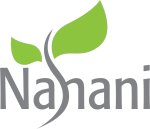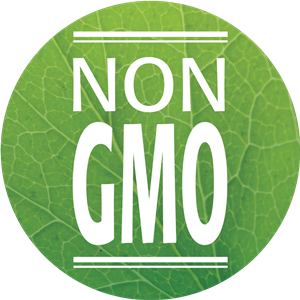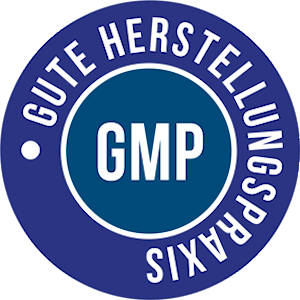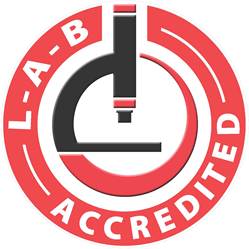
 Immer mehr Menschen ernähren sich bewusst. Doch selbst bei einer ausgewogenen Ernährung ist es schwer, den täglichen Bedarf des Körpers an beispielsweise Vitaminen und Mineralstoffen vollständig zu decken. Es kann daher sinnvoll sein, die Nahrung zu ergänzen.
Immer mehr Menschen ernähren sich bewusst. Doch selbst bei einer ausgewogenen Ernährung ist es schwer, den täglichen Bedarf des Körpers an beispielsweise Vitaminen und Mineralstoffen vollständig zu decken. Es kann daher sinnvoll sein, die Nahrung zu ergänzen.
JuicyVit Oxiprotect ist ein Cocktail zur Komplettierung des Nährstoffbedarfs und liefert schon mit einem täglichen Glas zahlreiche gesundheitliche Vorteile, wie etwa die Unterstützung des Herz-Kreislauf- und Immunsystems sowie des Sehvermögens, für eine gut funktionierende Verdauung, gesunde Haut und Schleimhäute, und ist insgesamt ein unverzichtbares Präparat zur Unterstützung von Anti-Aging-Therapien.
Jede Dose beinhaltet das Konzentrat von ca. 90 Himbeeren, 40 Sauerkirschen, 190 Heidelbeeren, 15 Gartenerdbeeren, 8 Granatäpfeln, 50 Brombeeren, mehr als 4000 Sanddornbeeren und über 500 Goji-Beeren. Die Goji-Beere wird in der traditionellen chinesischen Medizin bereits seit Jahrhunderten zur Verbesserung der Gesundheit und für ein langes, gesundes Leben eingesetzt. Sanddornbeeren liefern neben Carotinoiden, Tocopherolen, Tocotrienolen und Phytosterolen auch ein breites Spektrum an ungesättigten Fettsäuren der Typen Omega-3, Omega-6, Omega-7 und Omega-9. Studien belegen sehr positive Wirkungen bei der Vorbeugung und Behandlung von altersbedingten Hautschäden und eine Linderung bestimmter Beschwerden im Zusammenhang mit den Schleimhäuten. (1-4)
Ci Li Extrakt aus der Igelrose (Rosa Roxburghii) schützt die Zellen vor schädlichen freien Radikalen und zahlreichen, in unserem Körper vorhandenen Schadstoffen, die die Zellen schädigen können, was zum frühzeitigen Ausbruch vieler altersbedingter degenerativer Krankheiten führen kann.(5-6)
Lecithine erleichtern die Verdauung, eine bessere Absorption der Fette im Darm(7-9) und wirken leberschützend.(10,11)
In den vergangenen Jahren wurde durch eine Reihe von Untersuchungen belegt, dass Hibiskusblüten eine blutdrucksenkende, blutfettsenkende und antioxidative Wirkung besitzen.(12,13)
Stevia ist ein natürliches Süßungsmittel, das weit mehr Vorzüge bietet, als nur eine Alternative für Zucker zu sein. Gemäß Studien wirkt es regulierend auf den Blutzuckerspiegel und gegen Bluthochdruck.
Vitamin C ist an der Kollagensynthese beteiligt und trägt zur Erhaltung der Gesundheit von Gelenkknorpeln, Bändern, Knochen, Zähnen und Zahnfleisch, Haut und Muskeln und dem Gefäßendothel beiträgt. Es spielt eine wichtige Rolle im Energiestoffwechsel und für die Funktion der Muskeln, schützt vor oxidativen Schäden und ist für ein gutes Funktionieren des Immunsystems von grundlegender Bedeutung.(14-16)
Wie alle anderen roten Früchte besitzen Cranberries eine außergewöhnlich starke antioxidative Wirkung. Ihre wesentlichen Vorteile begründen sich jedoch auf die Tatsache, dass sie Proanthocyanidine beinhalten und dadurch sehr effektiv zur Vorbeugung und Behandlung von Harnwegsinfektionen eingesetzt werden.(17-19)
Bei dem in diesem Produkt enthaltenen Grüntee handelt es sich um ein hochwirksames Extrakt mit einem garantierten Anteil von 75 % Epigallocatechin-Gallat (EGCG), dem Bestandteil, dem der größte Teil der dieser Pflanze zugeschriebenen positiven Eigenschaften zugeschrieben wird. Dieses Extrakt zeichnet sich u.a. besonders durch seine antioxidativen, antiarteriosklerotischen, antibakteriellen und antiviralen Wirkungen aus sowie durch seine Wirkungen gegen Fettleibigkeit.(20-22)
Resveratrol ist ein aus der Wurzel des Japanischen Staudenknöterichs extrahiertes Polyphenol. Seine antioxidativen Eigenschaften sind schon seit Menschengedenken bekannt – doch am interessantesten ist diese Substanz wegen seiner Anti-Aging-Wirkung.(23-26)
Der Multi-Beeren Extrakt enthält 20 % Multi-Anthocyanidinen, d. h. Substanzen, die neben ihrer antioxidativen Wirkung einen positiven Einflussauf die Funktion der Gefäße, die neuronalen und kognitiven Funktionen und die Gesundheit der Augen haben. (27-28)
Nach Studienergebnissen haben Heidelbeeren eine gesundheitsfördernde Wirkung bei Augen- und Gefäßerkrankungen sowie bei Diabetes.(29-30)
Die wesentlichen Bestandteile der Astragaluswurzel wirken nachweislich immunmodulierend, verbessern die Funktionen des Herzkreislaufsystems und steigern die Vitalität.(31-33)
Neben der antioxidativen Wirkung der Schwarzen Holunderbeere erwähnen Studien auch ihre immunmodulierenden Eigenschaften und ihr möglicherweise positiver Einfluss bei Diabetes , da sie die Freisetzung von Insulin anregen.(34-37)
Die im Traubenhaut- und Traubenkernextrakt enthaltenen bioaktiven Verbindungen sind starke Radikalfänger, insbesondere von freien Sauerstoffradikalen, und hemmen die für die Schädigung der Kapillarenwände verantwortlichen Enzyme.(38-42)
Co-Enzym Q10 (Ubichinon) spielt eine wesentliche Rolle bei der Energieproduktion des Körpers, wirkt antioxidativ und stärkt die Gesundheit von Herz und Gehirn.(43-46)
Lutein, Zeaxanthin und Lycopin sind Carotinoide, die für die Augengesundheit essentiell sind. Lycopin ist außerdem wichtig für die Gesundheit der Prostata, während Astaxanthin als Antioxidans 10 Mal stärker als andere Carotinoide wirkt.(47-50)
Die Präbiotika Inulin und Arabinogalactan sind ausgezeichnete Nahrung für probiotische Keime. Sie sorgen für eine reichliche Vermehrung nützlicher Bakterienkulturen sowohl im Dünndarm wie im Dickdarm.(51-53)
Quellenangabe: 1. Cao, Guohua, et al. "Increases in human plasma antioxidant capacity after consumption of controlled diets high in fruit and vegetables." The American journal of clinical nutrition 68.5 (1998): 1081-1087. 2. Hininger, I., et al. "Effect of increased fruit and vegetable intake on the susceptibility of lipoprotein to oxidation in smokers." European journal of clinical nutrition 51.9 (1997): 601. 3. Roberts, W. G., M. H. Gordon, and A. F. Walker. "Effects of enhanced consumption of fruit and vegetables on plasma antioxidant status and oxidative resistance of LDL in smokers supplemented with fish oil." European journal of clinical nutrition 57.10 (2003): 1303. 4. Xaplanteris, Panagiotis, et al. "Tomato paste supplementation improves endothelial dynamics and reduces plasma total oxidative status in healthy subjects." Nutrition research 32.5 (2012): 390-394. 5. Mruk, Dolores D., et al. "Antioxidant superoxide dismutase-a review: its function, regulation in the testis, and role in male fertility☆." Contraception 65.4 (2002):305-311. 6. Greenwald, Robert A. "Superoxide dismutase and catalase as therapeutic agents for human diseases a critical review." Free Radical Biology and Medicine 8.2 (1990):201-209. 7. Krawczyk, T. "Lecithin: consider the possibilities." Inform 7 (1996): 1158-1175. 8. Wu, Yingzi, and Tong Wang. "Soybean lecithin fractionation and functionality." Journal of the American Oil Chemists' Society 80.4 (2003): 319-326. 9. Holló, J., et al. "Sunflower lecithin and possibilities for utilization." Journal of the American Oil Chemists’ Society 70.10 (1993): 997-1001. 10. Dewi, Lestari. "The effect of lecithin on liver function of white rats (Rattus norvegicus) induced carbon tetrachloride." Biomedical Engineering 2.1 (2016): 5-10. 11. Rotblatt, Michael. "Herbal medicine: expanded commission E monographs." Annals of internal medicine 133.6 (2000): 487-487. 12. Hopkins, Allison L., et al. "Hibiscus sabdariffa L. in the treatment of hypertension and hyperlipidemia: a comprehensive review of animal and human studies." Fitoterapia 85 (2013): 84-94. 13. Gurrola-Díaz, C. M., et al. "Effects of Hibiscus sabdariffa extract powder and preventive treatment (diet) on the lipid profiles of patients with metabolic syndrome (MeSy)." Phytomedicine 17.7 (2010): 500-505. 14. Barbany Cairó, J. R., and C. Javierre Garcés. "Suplementacion en vitamina C y rendimiento deportivo (I)." Archivos de medicina del deporte 23.111 (2006): 49-59. 15. Valdes, Fernando. "Vitamina C." Actas dermo-sifiliograficas 97.9 (2006): 557-568. 16. Wintergerst, Eva S., Silvia Maggini, and Dietrich H. Hornig. "Immune-enhancing role of vitamin C and zinc and effect on clinical conditions." Annals of Nutrition and Metabolism 50.2 (2006): 85-94. 17. Howell, Amy B. "Bioactive compounds in cranberries and their role in prevention of urinary tract infections." Molecular nutrition & food research 51.6 (2007): 732-737. 18. Gotteland, Martin, et al. "Modulation of Helicobacter pylori colonization with cranberry juice and Lactobacillus johnsonii La1 in children." Nutrition 24.5 (2008):421-426. 19. Koo, H., et al. "Influence of cranberry proanthocyanidins on formation of biofilms by Streptococcus mutans on saliva-coated apatitic surface and on dental caries development in vivo." Caries research 44.2 (2010): 116-126. 20. Chen, Haixia, et al. "Antioxidant activities of different fractions of polysaccharide conjugates from green tea (Camellia sinensis)." Food Chemistry 106.2 (2008): 559-563. 21. Sharangi, A. B. "Medicinal and therapeutic potentialities of tea (Camellia sinensis L.)–A review." Food Research International 42.5-6 (2009): 529-535. 22. Mitscher, Lester A., et al. "Chemoprotection: a review of the potential therapeutic antioxidant properties of green tea (Camellia sinensis) and certain of its constituents." Medicinal research reviews 17.4 (1997): 327-365. 23. Peng, Wei, et al. "Botany, phytochemistry, pharmacology, and potential application of Polygonum cuspidatum Sieb. et Zucc.: a review." Journal of ethnopharmacology 148.3 (2013): 729-745. 24. Pangeni, Rudra, et al. "Resveratrol: review on therapeutic potential and recent advances in drug delivery." Expert opinion on drug delivery 11.8 (2014): 1285-1298. 25. Athar, Mohammad, et al. "Resveratrol: a review of preclinical studies for human cancer prevention." Toxicology and applied pharmacology 224.3 (2007): 274-283. 26. Smoliga, James M., Joseph A. Baur, and Heather A. Hausenblas. "Resveratrol and health–a comprehensive review of human clinical trials." Molecular nutrition & food research 55.8 (2011): 1129-1141. 27. Garzon, Gloria Astrid. "Las antocianinas como colorantes naturales y compuestos bioactivos: revision." Acta Biologica Colombiana 13.3 (2008): 27-36. 28. Castaneda-Ovando, Araceli, et al. "Chemical studies of anthocyanins: A review." Food chemistry 113.4 (2009): 859-871. 29. Lietti, A., A. Cristoni, and M. Picci. "Studies on Vaccinium myrtillus anthocyanosides. I. Vasoprotective and antiinflammatory activity." Arzneimittel-Forschung 26.5 (1976): 829-832. 30. Canter, Peter H., and Edzard Ernst. "Anthocyanosides of Vaccinium myrtillus (bilberry) for night vision—a systematic review of placebo-controlled trials." Survey of ophthalmology 49.1 (2004): 38-50. 31. Cho, William Chi Shing, and Kwok Nam Leung. "In vitro and in vivo immunomodulating and immunorestorative effects of Astragalus membranaceus." Journal of ethnopharmacology 113.1 (2007): 132-141. 32. Cho, William CS, and Kwok N. Leung. "In vitro and in vivo anti-tumor effects of Astragalus membranaceus." Cancer letters 252.1 (2007): 43-54. 33. Tseng, Ailun, et al. "An in vivo molecular response analysis of colorectal cancer treated with Astragalus membranaceus extract." Oncology reports 35.2 (2016): 659-668. 34. Zakay-Rones, Z., et al. "Randomized study of the efficacy and safety of oral elderberry extract in the treatment of influenza A and B virus infections." Journal of International Medical Research 32.2 (2004): 132-140. 35. Kong, Fan-kun. "Pilot clinical study on a proprietary elderberry extract: efficacy in addressing influenza symptoms." Online Journal of Pharmacology and Pharmacokinetics 5 (2009): 32-43. 36. Krawitz, Christian, et al. "Inhibitory activity of a standardized elderberry liquid extract against clinically-relevant human respiratory bacterial pathogens and influenza A and B viruses." BMC complementary and alternative medicine 11.1 (2011): 16. 37. Ciocoiu, M., et al. "The effects of Sambucus nigra polyphenols on oxidative stress and metabolic disorders in experimental diabetes mellitus." Journal of physiology and biochemistry 65.3 (2009): 297-304. 38. Koga, Takuro, et al. "Increase of antioxidative potential of rat plasma by oral administration of proanthocyanidin-rich extract from grape seeds." Journal of Agricultural and Food Chemistry 47.5 (1999): 1892-1897. 39. Deckert, Valerie, et al. "Prevention of LDL α-tocopherol consumption, cholesterol oxidation, and vascular endothelium dysfunction by polyphenolic compounds from red wine." Atherosclerosis 165.1 (2002): 41-50. 40. Fitzpatrick, David F., et al. "Vasodilating procyanidins derived from grape seeds." Annals of the New York Academy of Sciences 957.1 (2002): 78-89. 41. Balu, Muthaiya, et al. "Rejuvenation of antioxidant system in central nervous system of aged rats by grape seed extract." Neuroscience letters 383.3 (2005): 295-300. 42. Wang, Yan-Jiang, et al. "Consumption of grape seed extract prevents amyloid-β deposition and attenuates inflammation in brain of an Alzheimer’s disease mouse."Neurotoxicity research 15.1 (2009): 3-14. 43. Littarru, Gian Paolo, and Luca Tiano. "Bioenergetic and antioxidant properties of coenzyme Q 10: recent developments." Molecular biotechnology 37.1 (2007): 31-37. 44. Lee, Bor-Jen, et al. "Coenzyme Q10 supplementation reduces oxidative stress and increases antioxidant enzyme activity in patients with coronary artery disease." Nutrition 28.3 (2012): 250-255. 45. Sanoobar, Meisam, et al. "Coenzyme Q10 supplementation reduces oxidative stress and increases antioxidant enzyme activity in patients with relapsing–remitting multiple sclerosis." International Journal of Neuroscience 123.11 (2013): 776-782. 46. Caso, Giuseppe, et al. "Effect of coenzyme q10 on myopathic symptoms in patients treated with statins." The American journal of cardiology 99.10 (2007): 1409 47. Ma, Le, and Xiao-Ming Lin. "Effects of lutein and zeaxanthin on aspects of eye health." Journal of the Science of Food and Agriculture 90.1 (2010): 2-12. 48. Carranco Jauregui, Maria Elena, Ma Calvo Carrillo, and Fernando Perez-Gil Romo. "Carotenoides y su funcion antioxidante: Revision." Archivos latinoamericanos de nutricion 61.3 (2011): 233-241. 49. Rowles III, J. L., et al. "Increased dietary and circulating lycopene are associated with reduced prostate cancer risk: A systematic review and meta-analysis." Prostate cancer and prostatic diseases 20.4 (2017): 361. 50. Fakhri, Sajad, et al. "Astaxanthin: A Mechanistic Review on its Biological Activities and Health benefits." Pharmacological research (2018). 51. Roberfroid, Marcel B. "Inulin-type fructans: functional food ingredients." The Journal of nutrition 137.11 (2007): 2493S-2502S. 52. Gibson, Glenn R. "Dietary modulation of the human gut microflora using the prebiotics oligofructose and inulin." The Journal of nutrition 129.7 (1999): 1438S-1441S. 53. Flamm, Gary, et al. "Inulin and oligofructose as dietary fiber: a review of the evidence." Critical reviews in food science and nutrition 41.5 (2001): 353-362.














